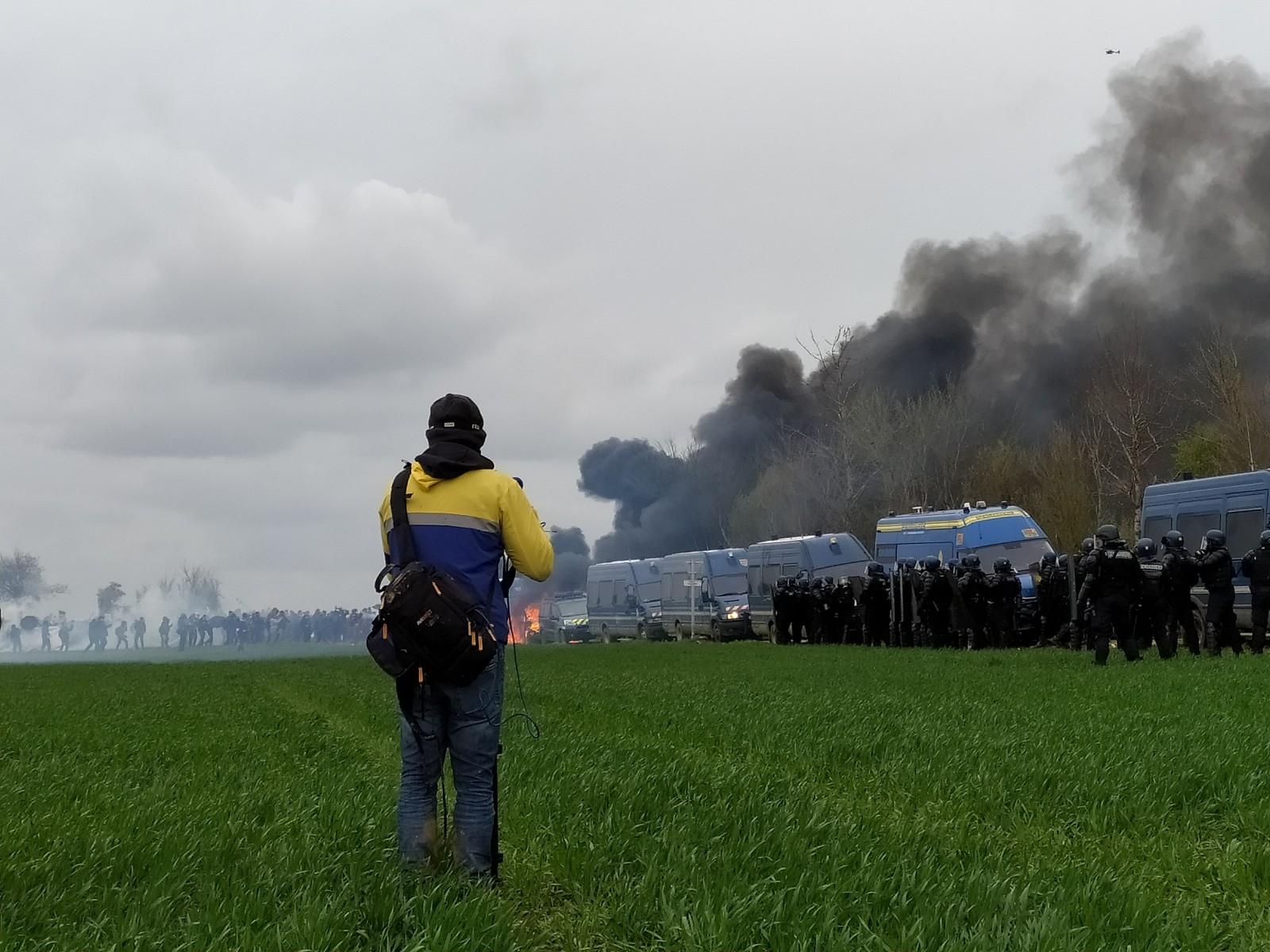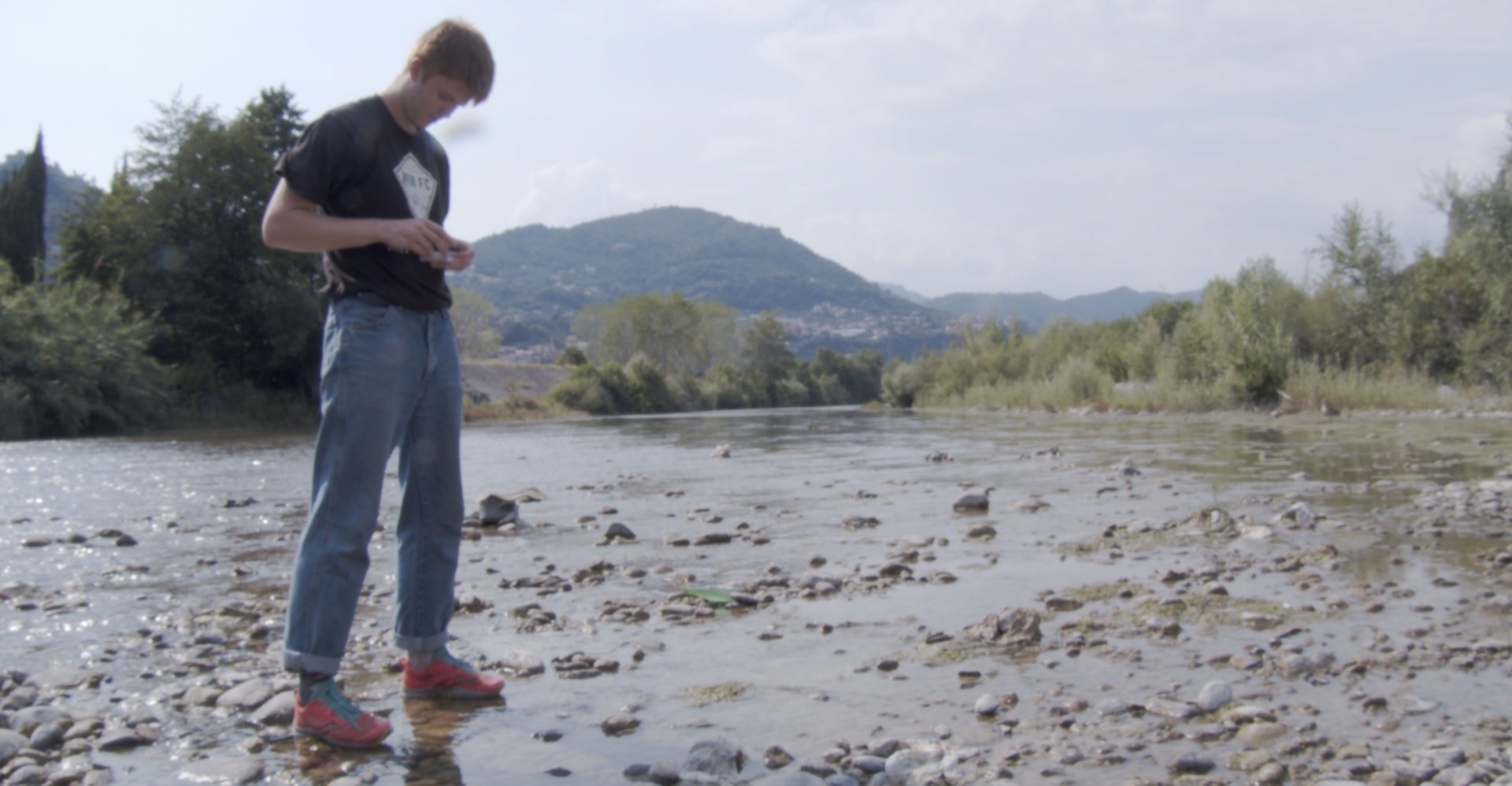
French police confront protesters of ‘mega-basins’ in Sainte-Soline | Image provided by: Pierre Bernat
By Zara Gounden & Fraser Byers – June 21, 2023
Last week the United Nations Office of the High Commissioner for Human Rights (OHCHR) published a report directed at French authorities that expressed concern about the excessive use of force deployed against protesters of water privatization in western France.
The official report published on June 15 by UN experts follows the violent crackdown that occurred on May 25 in Sainte-Soline. That weekend over 25,000 protesters gathered on farmland near the village of Sainte-Soline. They planned to stop the construction of a new ‘mega-basin’ designed to support year-round agricultural irrigation.
Some 3,000 police officers confronted the demonstrators and the situation quickly turned into a battleground. In the clash, 200 protesters and 50 police officers sustained injuries. One protester remains in a coma.
The French Ministry of the Interior and Overseas did not reply to a Circle of Blue request for comment.
The UN report focused on the authorities’ violent response in Sainte-Soline. The UN special rapporteurs criticized the use of tear gas and stun grenades to control crowds, emphasizing that France is the only European country employing these methods in public order operations.
The UN also took explicit issue with increasingly extreme rhetoric concerning environmental activists: “[UN experts] expressed concern about a growing trend of stigmatization and criminalisation of individuals and civil society organizations raising awareness about the consequences of climate change, to justify the excessive, repeated, and intensified use of force against them.”
What is the issue of the ‘mega-basins’ ?
The Sainte-Soline reservoir, one of 16 ‘mega-basins’ being constructed in the Sèvre Niortaise watershed, a catchment that feeds the protected Poitevin marshlands, lies at the center of the demonstrations. Agricultural production in the area had been increasingly stressed in recent years due to major droughts, and large players in the farming industry have pushed for a network of large reservoirs as a solution. Construction is supposed to guarantee irrigation and agricultural production throughout even dry summers, with reserves being replenished in the winter.
The Sainte-Soline reservoir is the largest planned, with 720,000 cubic meters of water. The reservoir is designed to supply 12 farms with water; a fact that opponents cite as proof that the project will only benefit large industrial agriculture while damaging the environment for others – including small farms. It will draw reserves from the phreatic zone beneath the water table, making increasingly depleted aquifers more accessible and exposing ground water to evaporation and contamination.
Protesters argue that the basins offer a superficial remedy to water shortages, exacerbating underlying issues instead of resolving them. They propose reimagining more sustainable agricultural practices and dramatically reducing water usage. As it stands, the reservoirs in Deux-Sèvres remain under construction and multiple protests are planned in the next two months.
Fraser is a reporting intern at Circle of Blue. Originally from Salt Spring Island, Canada, he is now a Davis Scholar pursuing dual degrees with UC Berkeley and Sciences Po Paris. Fraser is majoring in Environmental Economics and Policy, and Politics and Government – Specializing in the MENA region.





